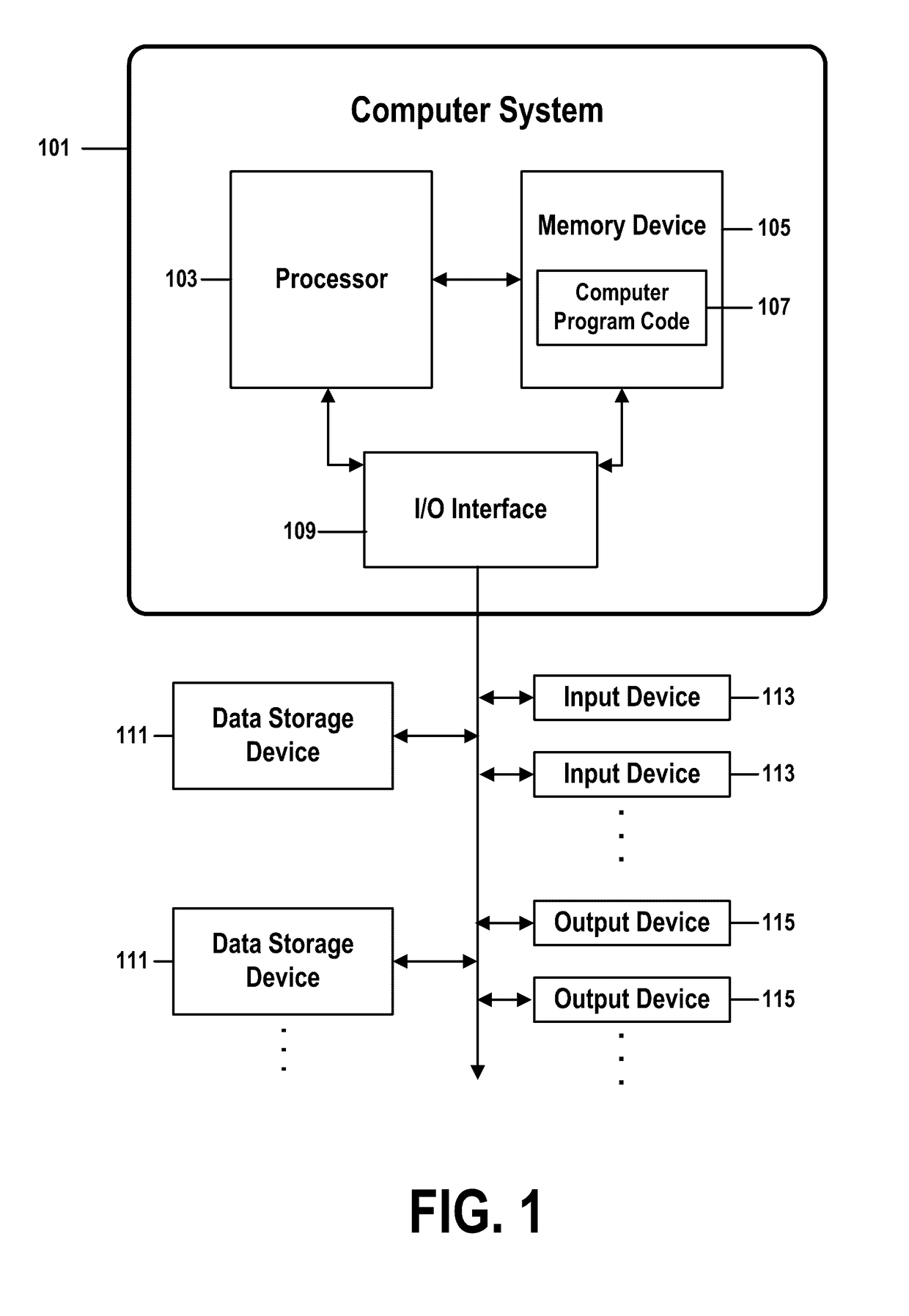Using machine-learning to perform linear regression on a dna-computing platform
a machine learning and linear regression technology, applied in machine learning, instruments, computing, etc., can solve the problems of imposing a great burden on a conventional electronic, scalar, computer system, cost-effective or computationally practical, and no such solution exists today
- Summary
- Abstract
- Description
- Claims
- Application Information
AI Technical Summary
Benefits of technology
Problems solved by technology
Method used
Image
Examples
Embodiment Construction
[0044]Systems and methods of the present invention enhance current methods of DNA computing by manipulating the reaction rate of a chemical reaction by which a DNA-computing operation is performed. This manipulating may be performed by adjusting one or more physical characteristics of the input molecules or of the medium in which the reaction takes place, such as a temperature, a concentration, a static or dynamic gas or liquid pressure, a molecular bonding strength, a strength or concentration of a catalyst, or a molecular surface area.
[0045]Such embodiments may use such manipulation to identify a value of a coefficient (such as an array of “beta” regression coefficients of a linear-regression analysis), of a set of neural network weightings used to bias squashing functions, or of any other type of mathematical constant, coefficient, or variable that may bias, scale, or otherwise affect an overall data distribution of a solution to a DNA-computing problem.
[0046]Embodiments of the p...
PUM
 Login to View More
Login to View More Abstract
Description
Claims
Application Information
 Login to View More
Login to View More - R&D
- Intellectual Property
- Life Sciences
- Materials
- Tech Scout
- Unparalleled Data Quality
- Higher Quality Content
- 60% Fewer Hallucinations
Browse by: Latest US Patents, China's latest patents, Technical Efficacy Thesaurus, Application Domain, Technology Topic, Popular Technical Reports.
© 2025 PatSnap. All rights reserved.Legal|Privacy policy|Modern Slavery Act Transparency Statement|Sitemap|About US| Contact US: help@patsnap.com



